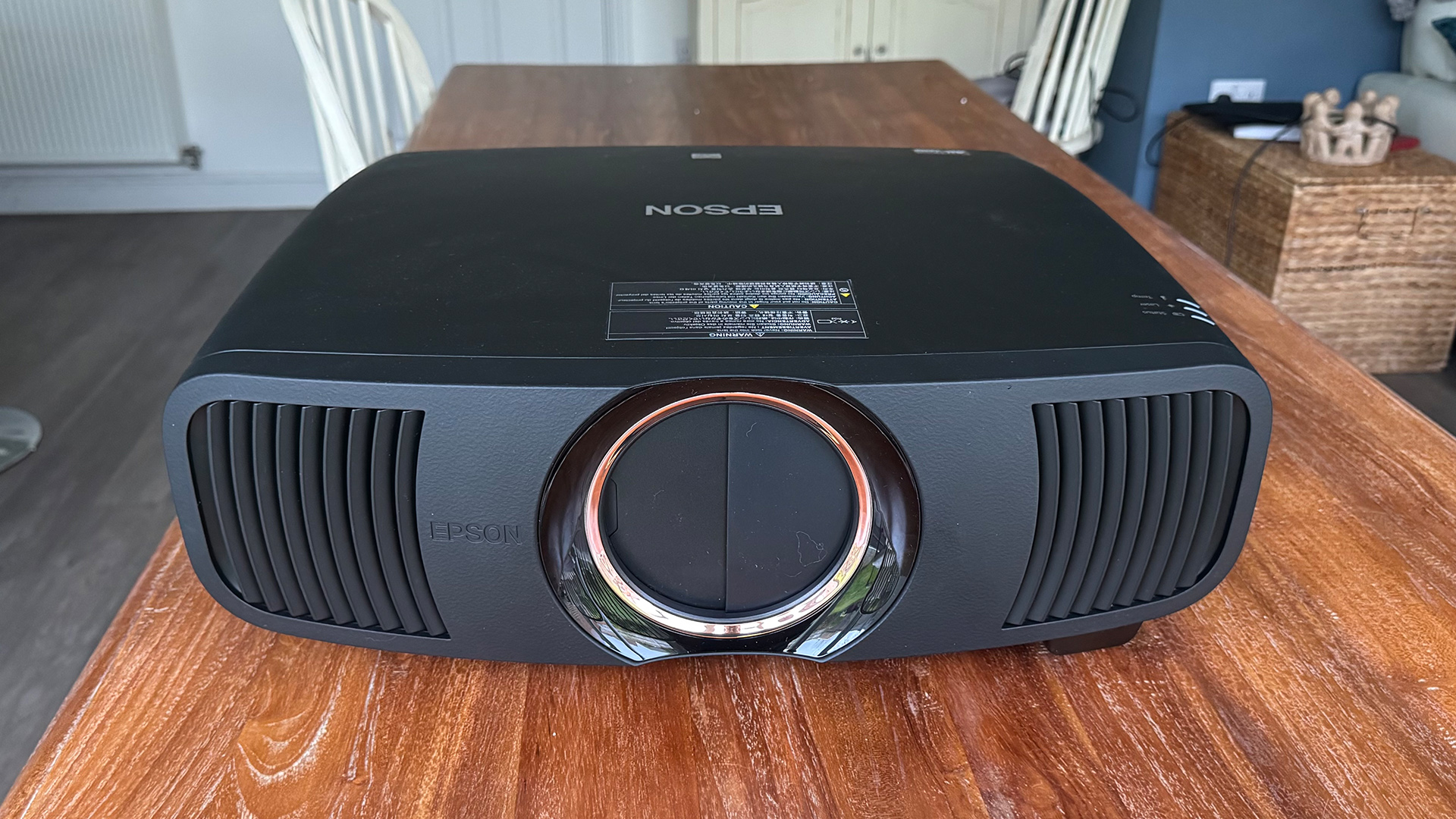What Hi-Fi? Verdict
Two grand might seem a lot for a portable projector, but the CineBeam does more than most, and does it all admirably
Pros
- +
One-box, truly portable system
- +
Impressive 4K HDR picture
- +
Easy to build a system around
Cons
- -
Lacks a little detail
- -
Motion could be better
- -
Built-in speakers only adequate
Why you can trust What Hi-Fi?
Give us a couple of grand to spend and we could build a pretty decent entry-level home cinema system. Even on a budget, you have a strong number of options when it comes to projectors, amplifiers, speakers and sources.
Ask us to set it all up every time you want to watch a film, then pack it away in the broom cupboard afterwards, however, and we’d likely change our minds.
Design
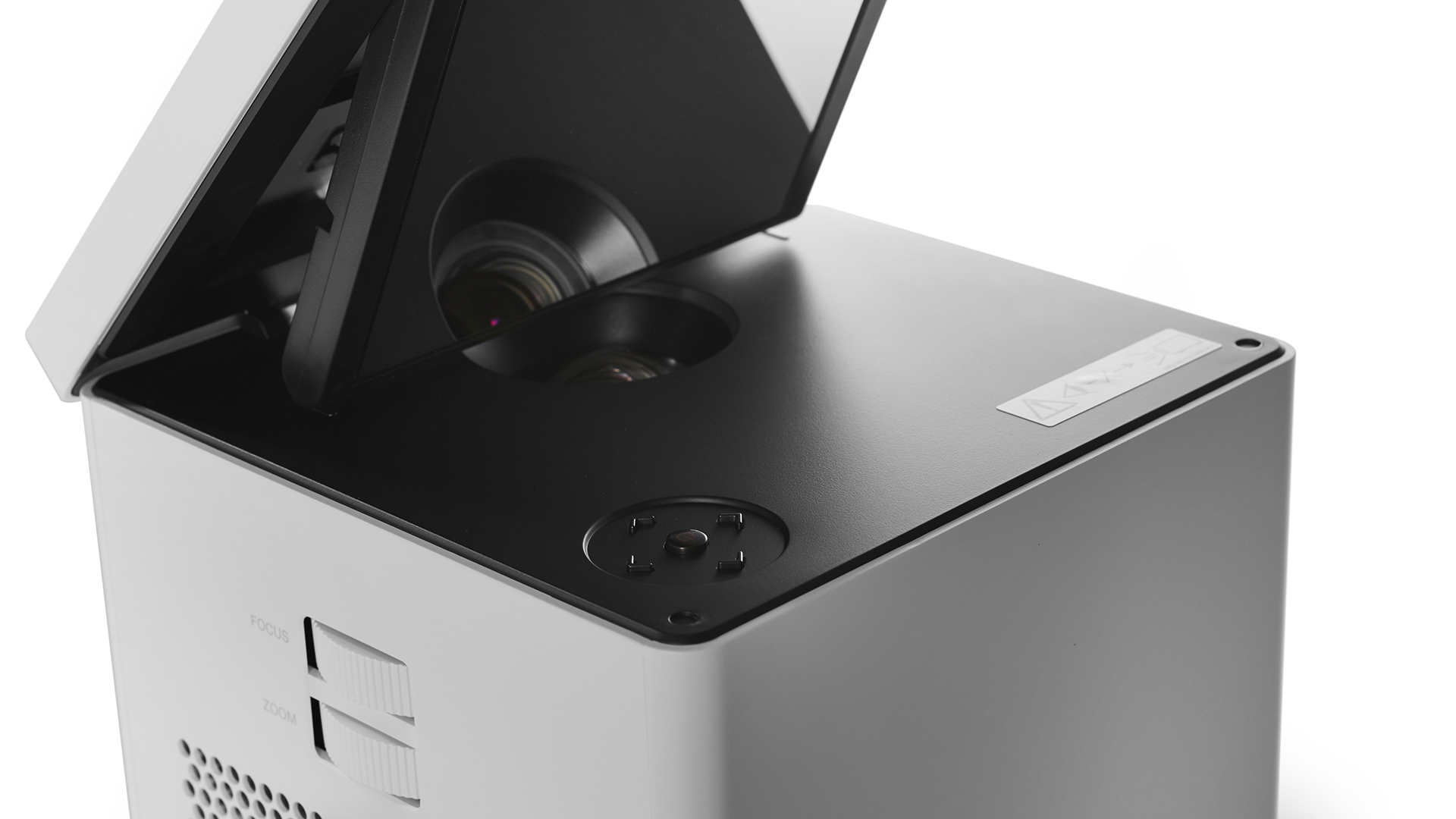
Though obviously there are sacrifices to be made on performance when compared with a system of separates, the LG CineBeam offers the components of just such a system: a 4K HDR picture, stereo sound, an array of smart sources, all in a unit you can carry like a holdall and set up wherever and whenever you might choose. Even the power cable is wound up inside the base, so there is really nothing you have to plug in if you don’t want to.
That’s the great beauty of the CineBeam: its versatility and intuitive simplicity. As long as you have a clean wall or ceiling upon which to throw a picture, you can have it up and running in a matter of minutes each time you use it. It even makes a great case for itself as one of the best outdoor projectors you could buy.
Flip the lid that conceals the lens and you’ll find a mirror on the inside. This allows the CineBeam to shine at any surface and in any position. Stand it upright and you can have your picture on the ceiling – if you’re in bed perhaps – or reflect it towards a wall, or lay it on its side if it’s already at the perfect viewing angle; you can even mount it to the ceiling as a permanent fixture should you so wish.
Ideal placement can predictably take a little time first time round, but the CineBeam’s Auto Vertical Keystone is decent at helping you get the picture aligned and there is a digital version to fine-tune it yourself. Focus and zoom – it’ll produce a picture sized anywhere between 66 and 150 inches – are easily controllable by a pair of dials at the lens-end of the projector.
Features
With the CineBeam’s 20,000-hour laser life, you could watch a two-hour film every day for the next 22 years before needing to replace it. You’re likely to need plenty of source options, then, and LG has you covered in this regard as well.
As we mentioned, there’s no specific need for anything else to be plugged in. That’s thanks to the company’s smart hub, which grants you access to a number of TV and film apps, including catch-up services such as All 4 and streaming services such as Netflix. The one big, surprising omission is BBC iPlayer.
You can also cast content directly from your smartphone, tablet or laptop – also handy if you wanted to use the CineBeam for slide shows and presentations. An Ethernet port means you can wire it into your home network for faster and more stable internet while using those built-in features.
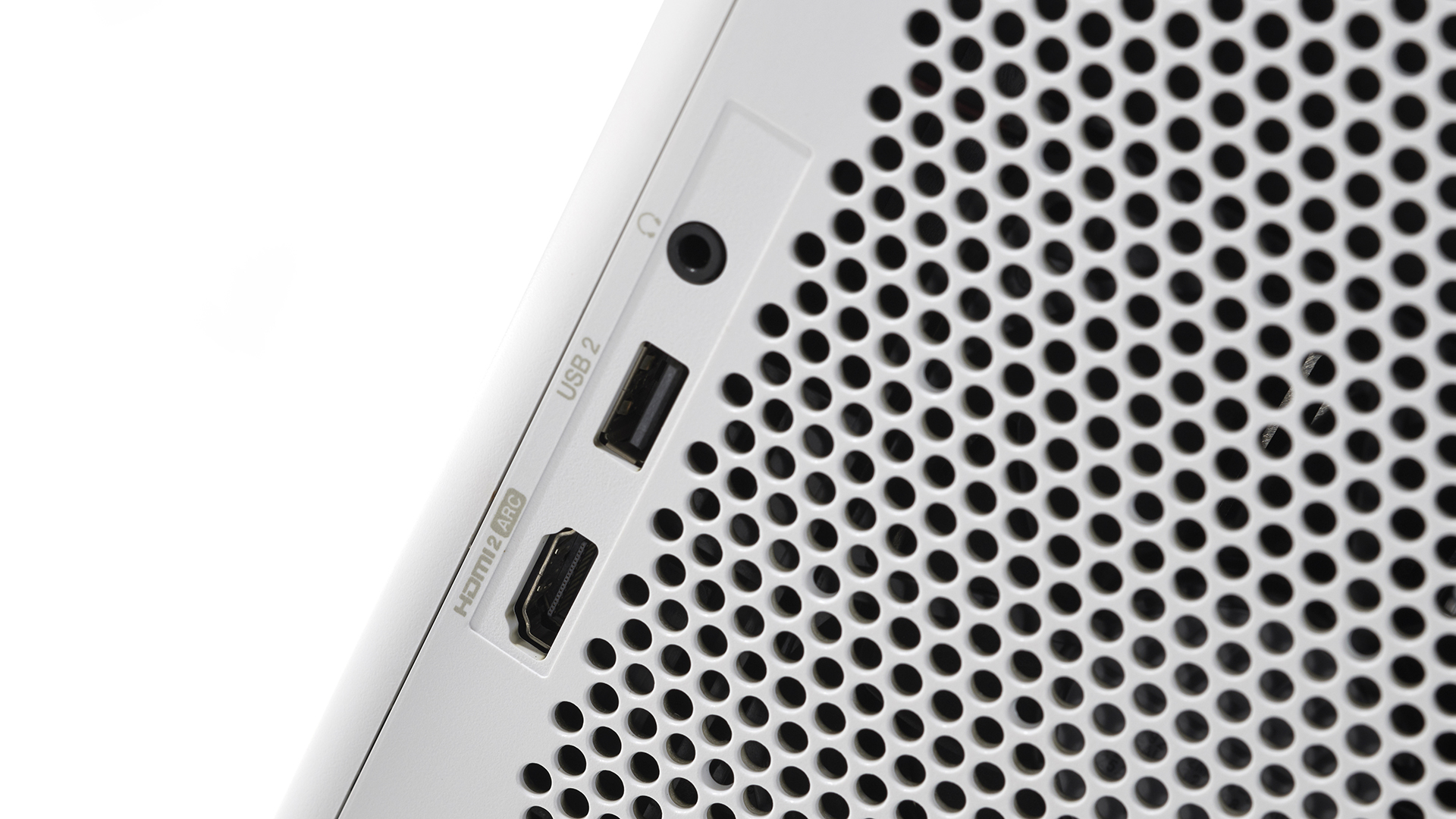
In terms of physical connections, there are two HDMI ports and a further pair for USB (one 3.0, the other 2.0). The latter is marvellously handy for connecting a hard drive or USB stick holding video content, while HDMI is ideal for a 4K Blu-ray player or games console, or if you want to use the CineBeam solely as a projector and hook it up to a home cinema amp.
But, of course, it isn’t purely a projector. Harman Kardon has helped kit the CineBeam out with a 7W-per-channel stereo-speaker system, running along either side of the unit, meaning you needn’t necessarily add anything at all. Built-in Bluetooth, however, means you can just as easily boost the sound with a wireless speaker or soundbar, and there are 3.5mm aux, SPDIF and optical digital connections for wired sound.
We’ll talk about the native sound in a minute, but LG here proves its commitment to versatility once more, allowing you to use the CineBeam as an all-in-one system, or grow a larger, more substantial one over time to suit your needs.
Picture
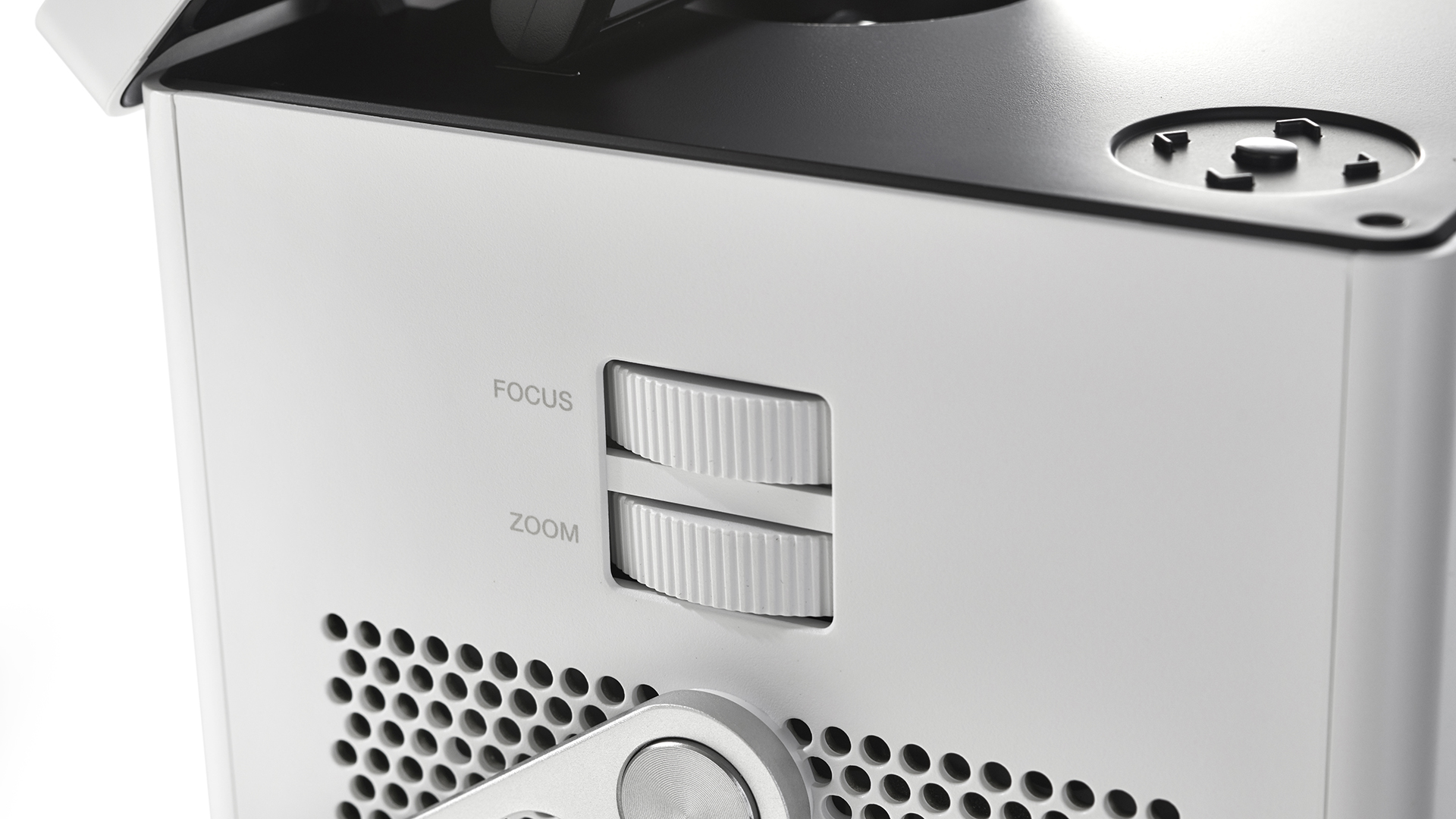
Given the portable nature of the CineBeam, and the likelihood few are going to leave it in situ between film nights, we were pleased to get a solid picture straight from the box. It is best to spend a little time experimenting with various settings, though, and we end up eschewing LG’s presets, instead opting for the User setting with only contrast given a small boost.
What you get in return is an impressively crisp and detailed picture, with decent depth and natural hues. It is bright enough without being garish, vibrant enough to combat leaked sunlight and a less than gleaming white wall or projector screen, and finds its home painting subtle tones rather than straining to impress with overcooked colours.
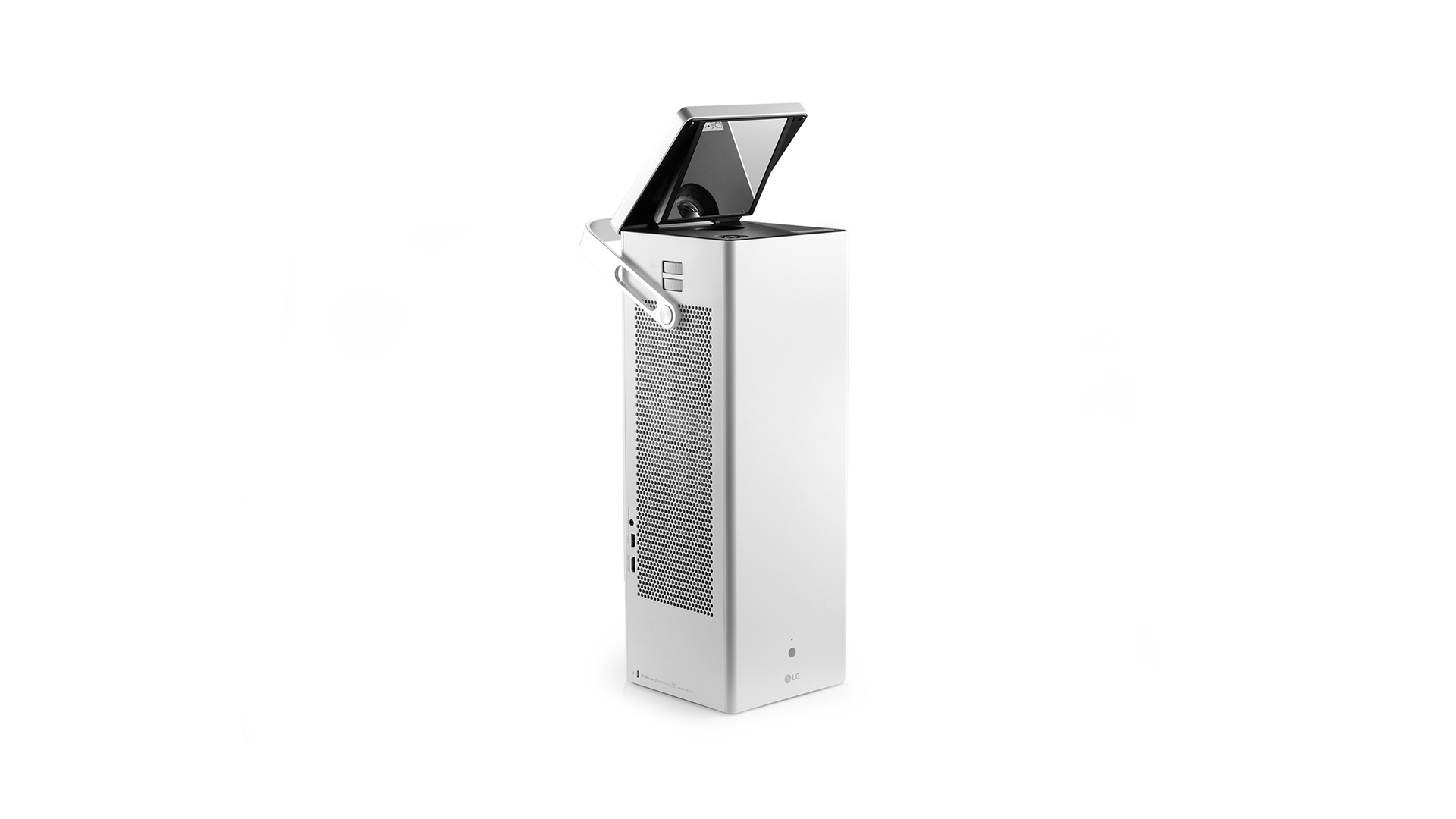
Resolution 4K UHD (HDR10)
Picture size 66-150in
HDMI inputs 2
USB inputs 2
Bluetooth Yes
Smart functionality Yes
Brightness 2500 lumens
Laser life 20,000 hours
That isn’t to say it can’t make a picture pop sufficiently, but it is evident balance has been of greater focus than immediacy when it comes to contrast and colour. Put the CineBeam against a projector such as the Optoma UHD40, our current Award winner at £1300, and the latter will show up a little more detail – especially noticeable in blacks and greys – and offer a more pronounced level of contrast, but it far from puts the CineBeam to shame. And that’s even ignoring the fact that these are two different types of product.
The only other area in which the CineBeam can irk a little is in terms of motion. LG has equipped the unit with its TruMotion technology, which automatically smoothes frames in order to sidestep the characteristic judder you’re always likely to get with a projector.
But, in pursuit of a more fluid picture, it can often feel somewhat artificial in comparison with class-leading projectors. There are levels to it, of course, so the effect can be quelled, and affects some pictures more than others, but it’s still not quite as natural as it could be.
Nonetheless, the CineBeam produces a smashing picture, and its sonic talents are in many ways equally impressive.
Sound
We have to remember this is still a sound coming from a projector, though we’re sure nobody reading this will expect anything nearing the sound of a dedicated home cinema package. It means the presentation is quite light – you can’t put in any sizeable drivers without their vibrations shaking the projector itself – but other than that the CineBeam performs well.
It’s fast, dynamic and actually goes quite loud; you may also be surprised by how well stereo imaging is produced, with certain effects travelling a decent distance either side of the CineBeam. This, of course, will also depend on where you place the projector: if it’s between two armchairs, for example, the balance will obviously be skewed to whichever channel is nearest you.
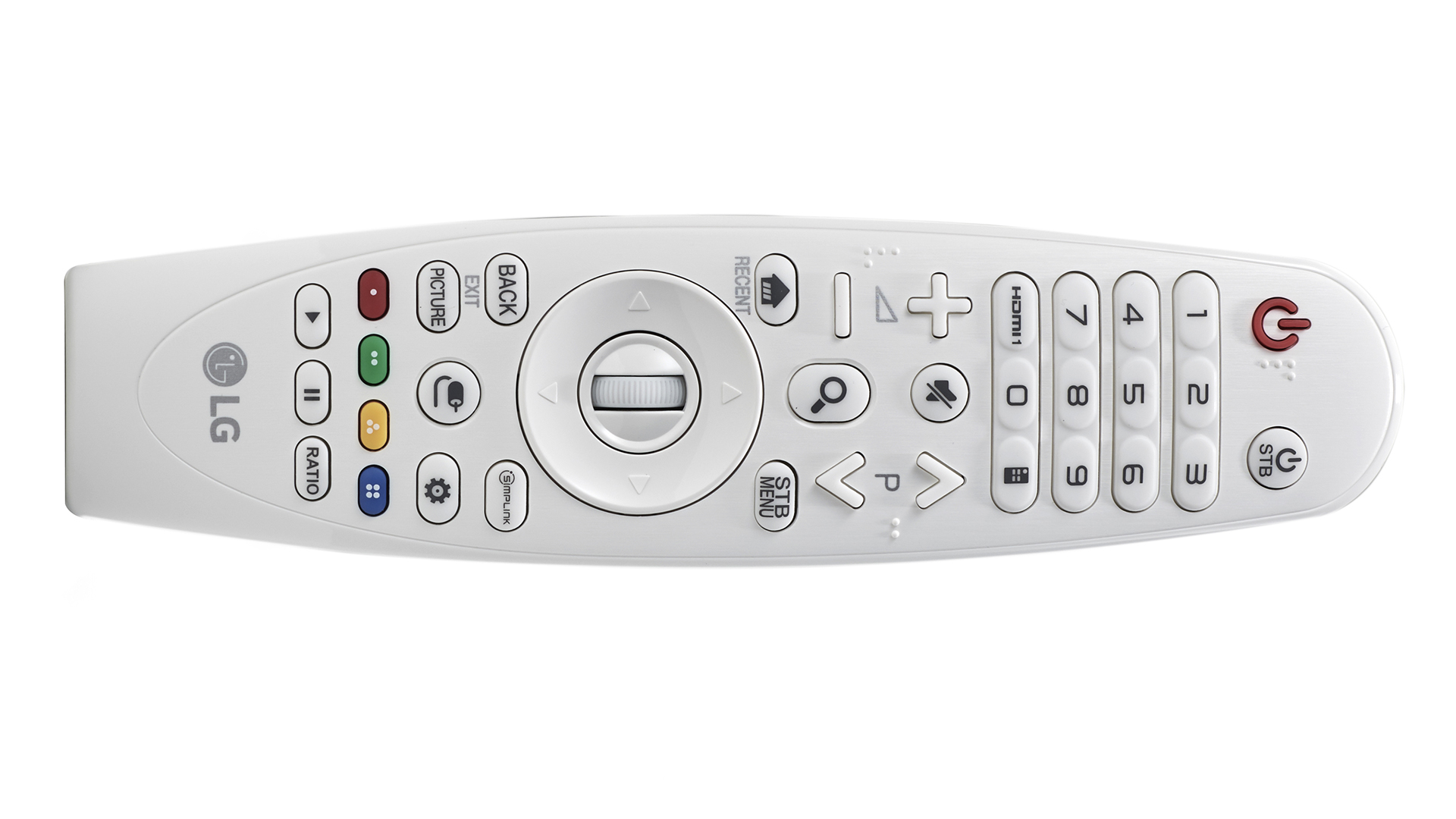
Though we’re speaking about it in terms of being a full home cinema system, however, we’d tend to assume most people will have a wireless speaker somewhere in the house – if not a soundbar or soundbase – to which they can hook the CineBeam up. We simply connected ours to a couple via Bluetooth, then via the aux output, and marvelled at how well the projector worked as an audio source.
Now able to go louder, with substantially more weight and presence, the unit still manages to translate that rhythmic, expressive presentation from the CineBeam’s own speakers. While it falls short of being a necessity, we’d ultimately recommend hooking up a reasonably priced external speaker like this, and can happily report that you won’t be disappointed by the results.
Verdict
It is perhaps difficult to know exactly where to place LG’s CineBeam in terms of product category. Is it a projector, a source, or a whole system you can improve with well selected add-ons?
Ultimately, though, it doesn’t matter a great deal, because it holds up well in all regards. For those who want to throw a film upon their wall every now and then, it provides a smashing picture and impressive sound for its size; for those who want to build a system, the CineBeam affords you time to do so without missing out on entertainment in the interim.
This is one of those rare times innovation meets performance.
SCORES
- Picture 4
- Features 5
- Build 5
MORE:
What Hi-Fi?, founded in 1976, is the world's leading independent guide to buying and owning hi-fi and home entertainment products. Our comprehensive tests help you buy the very best for your money, with our advice sections giving you step-by-step information on how to get even more from your music and movies. Everything is tested by our dedicated team of in-house reviewers in our custom-built test rooms in London, Reading and Bath. Our coveted five-star rating and Awards are recognised all over the world as the ultimate seal of approval, so you can buy with absolute confidence.

